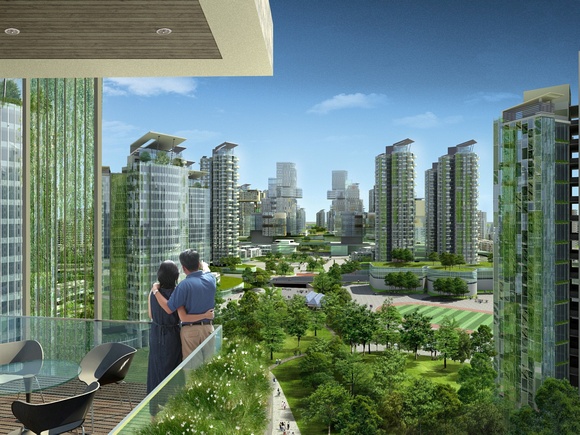Kubla Khan decreed his stately pleasure dome, but he couldn’t escape the voices of the dead. China is building its top-down insta-cities, believing it can forgo organic development, but large swaths of these developments don’t echo with life. If they’re a dream, it’s a dream that may never be fulfilled. The opening of Jonathan Kaiman’s Guardian article about Tianjin Eco-city, which is green in more ways than one:
“Wang Lin needed a change. The crushing air pollution and gridlock traffic in his hometown Hangu, an industrial district in China’s northern metropolis of Tianjin, made him anxious and sometimes sick.
Then he heard about the Sino-Singapore Tianjin Eco-city. According to its marketing, the £24bn development – a joint venture between the governments of China and Singapore – will one day be a “model for sustainable development” only 40km from Tianjin’s city centre and 150km from central Beijing. To Wang, it sounded like paradise.
Last year, the 36-year-old moved into an inexpensive flat in one of the city’s half-occupied apartment blocks. As a freelance translator, he doesn’t mind that most viable employers are at least half an hour away by car. He loves the relatively clean air and the personal space. But he also has his complaints.
By the time the city is complete – probably by 2020 – it should accommodate 350,000 people over 30 square kilometres. Five years into the project, however, only about three sq km have been completed, housing 6,000 permanent residents. There are no hospitals or shopping malls. Its empty highways traverse a landscape of vacant mid-rises and dusty construction yards.
‘This place is like a child – it’s in a development phase,’ Wang says. ‘But it’s chasing an ideal. It’s the kind of place where people can come to pursue their dreams.'”

